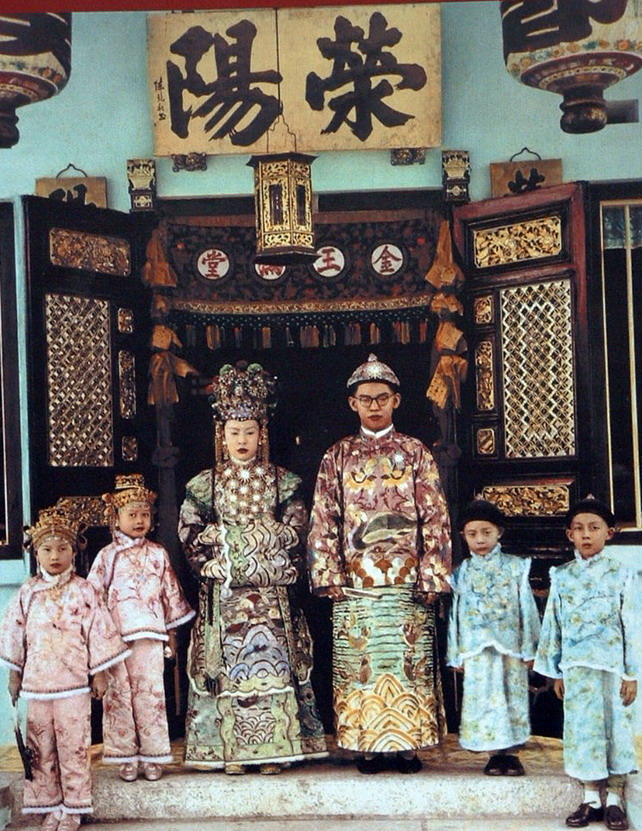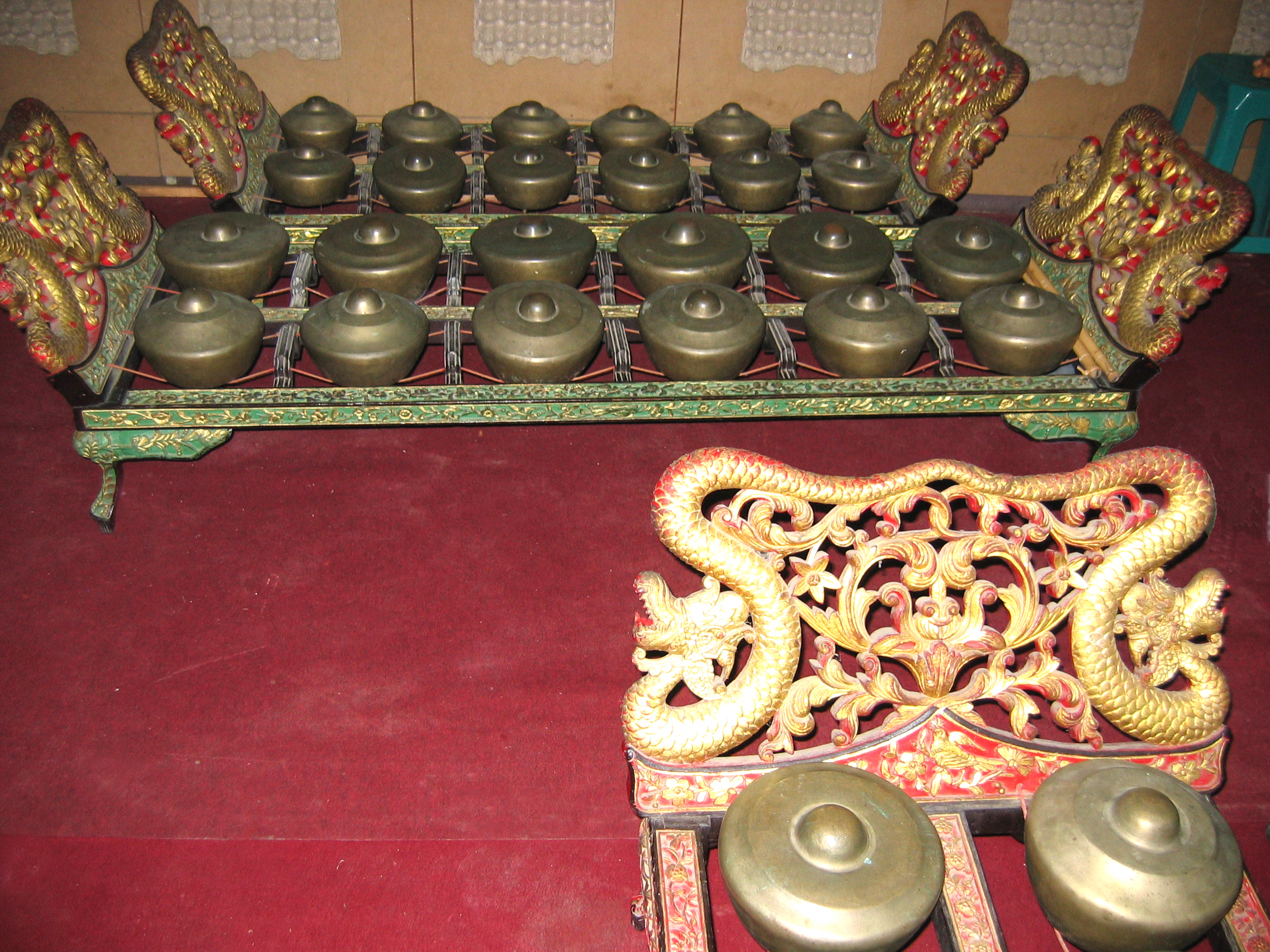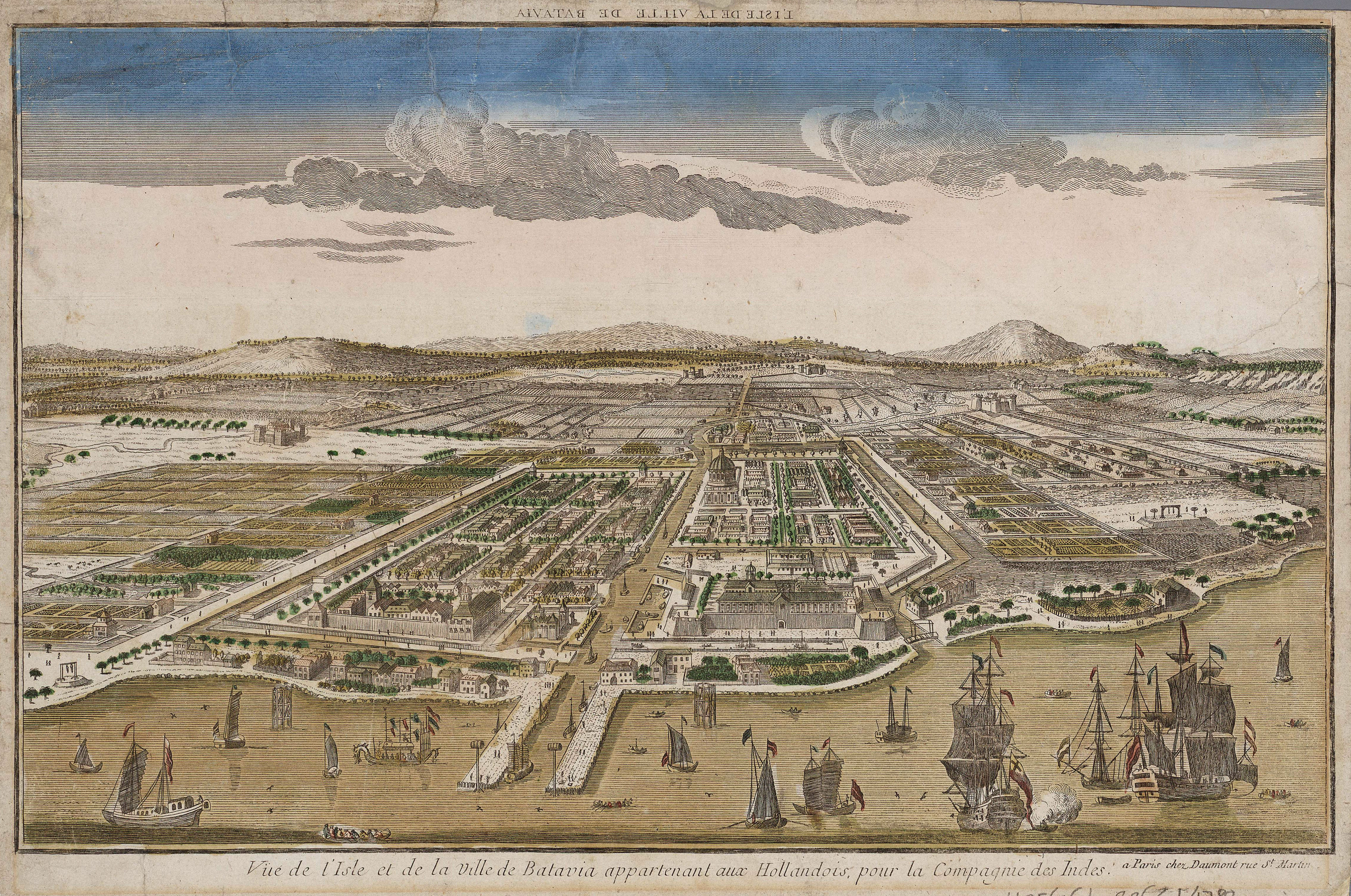|
Gambang Kromong
Gambang kromong is a traditional orchestra of Betawi people which is a blend of gamelan, Western music and Chinese-style pentatonic base tones. Gambang kromong is closely associated with the Chinese Betawi community, especially the Chinese Peranakan. It was popular in the 1930s. Instruments Gambang kromong orchestral instruments consists of: gambang kayu (a xylophone-like instrument), kromong (a set of 5 toned bonang), two Chinese rebab-like instruments called ''ohyan'' and ''gihyan'' with its resonator made out of a small coconut shell, a diatonic pitched flute that is blown crosswise, kenong and gendang drums. Western instruments such as trumpets, guitars, violins, and saxophones may also be included. History Nie Hoe Kong, Nie Hoe Kong, Kapitein der Chinezen, a musician and Dutch-appointed leader of the Chinese community in mid 18th-century History of Jakarta, Batavia, is considered one of the early figures who developed the Gambang kromong. In its first appearance in Batavia ... [...More Info...] [...Related Items...] OR: [Wikipedia] [Google] [Baidu] |
Gambang Kromong Betawi
A gambang, properly called a gambang kayu ('wooden gambang') is a xylophone-like instrument used among people of Indonesia in gamelan and kulintang, with wooden bars as opposed to the metallic ones of the more typical metallophones in a gamelan. A largely obsolete instrument, the gambang gangsa, is a similar instrument made with metal bars. Gambang kayu The bars of the instrument are made of a se wood, generally teak. It also found in ironwood (kayu besi). The bars mounted in a deep wooden case that serves as a resonator. Instruments typically have 17-21 keys that are easily removed, and are kept in place by having a hole through which a nail is placed. Generally a full gamelan has two sets, one gambang pelog and the other one gambang slendro. A pair of long thin mallets (''tabuh''), made of flexible domestic buffalo, water buffalo horn tipped with felt, are used to play the instrument. Gambangs are generally played in parallel octaves (gembyang). Occasionally, other styles of pl ... [...More Info...] [...Related Items...] OR: [Wikipedia] [Google] [Baidu] |
Betawi People
Betawi may refer to: *Betawi people *Betawi language * Betawi cuisine *Betawi mask dance See also * Batavia (other) * Batavi (other) Batavi may refer to: *Batavi (Germanic tribe) **Revolt of the Batavi *Batavi (military unit) *Batavi (software), e-commerce software * ''Batavi'' (album), album by Dutch pagan/folk metal band Heidevolk See also *Batavia (other) Batavia m ... {{disambig Language and nationality disambiguation pages ... [...More Info...] [...Related Items...] OR: [Wikipedia] [Google] [Baidu] |
Gamelan
Gamelan () ( jv, ꦒꦩꦼꦭꦤ꧀, su, ᮌᮙᮨᮜᮔ᮪, ban, ᬕᬫᭂᬮᬦ᭄) is the traditional ensemble music of the Javanese, Sundanese, and Balinese peoples of Indonesia, made up predominantly of percussive instruments. The most common instruments used are metallophones played by mallets and a set of hand-played drums called '' kendhang/Kendang'', which register the beat. The kemanak (a banana-shaped idiophone) and gangsa (another metallophone) are commonly used gamelan instruments in Bali. Other instruments include xylophones, bamboo flutes, a bowed instrument called a ''rebab'', a zither-like instrument ''siter'' (in Javanese ensemble) and vocalists named '' sindhen'' (female) or ''gerong'' (male).Sumarsam (1998)''Introduction to Javanese Gamelan'' Middletown. Although the popularity of gamelan has declined since the introduction of pop music, gamelan is still commonly played in many traditional ceremonies and other modern activities in Indonesia, b ... [...More Info...] [...Related Items...] OR: [Wikipedia] [Google] [Baidu] |
Peranakan
The Peranakans () are an ethnic group defined by their genealogical descent from the first waves of Southern Chinese settlers to maritime Southeast Asia, known as Nanyang (), namely the British Colonial ruled ports in the Malay Peninsula, the Indonesian Archipelago as well as Singapore. Peranakan culture, especially in the dominant Peranakan centres of Malacca, Singapore, Penang and Medan, is characterized by its unique hybridization of ancient Chinese culture with the local cultures of the Nusantara region, the result of a centuries-long history of transculturation and interracial marriage. Immigrants from the southern provinces of China arrived in significant numbers in the region between the 14th and 17th centuries, taking abode in the Malay Peninsula (where their descendants in Malacca, Singapore and Penang are referred to as Baba–Nyonya); the Indonesian Archipelago (where their descendants are referred to as Kiau–Seng); and Southern Thailand, primarily in Phuket, Tr ... [...More Info...] [...Related Items...] OR: [Wikipedia] [Google] [Baidu] |
Bonang
The bonang is an Indonesian musical instrument used in the Javanese gamelan. It is a collection of small gongs (sometimes called "kettles" or "pots") placed horizontally onto strings in a wooden frame (''rancak''), either one or two rows wide. All of the kettles have a central boss, but around it the lower-pitched ones have a flattened head, while the higher ones have an arched one. Each is tuned to a specific pitch in the appropriate scale; thus there are different bonang for pelog and slendro. They are typically hit with padded sticks (''tabuh''). This is similar to the other cradled gongs in the gamelan, the kethuk, kempyang, and kenong. Bonang may be made of forged bronze, welded and cold-hammered iron, or a combination of metals. In addition to the gong-shaped form of kettles, economical bonang made of hammered iron or brass plates with raised bosses are often found in village gamelan, in Suriname-style gamelan, and in some American gamelan. In central Javanese gamela ... [...More Info...] [...Related Items...] OR: [Wikipedia] [Google] [Baidu] |
Rebab
The ''rebab'' ( ar, ربابة, ''rabāba'', variously spelled ''rebap'', ''rubob'', ''rebeb'', ''rababa'', ''rabeba'', ''robab'', ''rubab'', ''rebob'', etc) is the name of several related string instruments that independently spread via Islamic trading routes over much of North Africa, Southeast Asia, the Middle East, and parts of Europe. The instrument is typically bowed, but is sometimes plucked. It is one of the earliest known bowed instruments, named no later than the 8th century, and is the parent of many bowed and stringed instruments. Variants There are chiefly 3 main types: A long-necked bowed variety that often has a spike at the bottom to rest on the ground (see first image to the right); thus this is called a spike fiddle in certain areas. Some of the instruments developing from this have vestigial spikes. A short-necked double-chested or "boat-shaped" variant; here plucked versions like the ''Maghreb rebab'' and the ''kabuli rebab'' (sometimes referred to a ... [...More Info...] [...Related Items...] OR: [Wikipedia] [Google] [Baidu] |
Gendang
Kendang or Gendang ( jv, ꦏꦼꦤ꧀ꦝꦁ, translit=Kendhang, su, ᮊᮨᮔ᮪ᮓᮀ, translit=Kendang, ban, ᬓᬾᬦ᭄ᬤᬂ, translit=Kendang, Tausug/Bajau Maranao: ''Gandang'', Bugis: ''Gendrang'' and Makassar: ''Gandrang'' or ''Ganrang'' ) is a two-headed drum used by people from the Indonesian Archipelago. Kendang is one of the primary instruments used in the Gamelan ensembles of Javanese, Sundanese, and Balinese, the Kendang ensemble as well as various Kulintang ensembles in Indonesia, Brunei, Malaysia, Singapore, and the Philippines. It is constructed in a variety of ways by different ethnic groups. It is a relation to the Indian mridangam double-headed drum. Overview The typical double-sided membrane drums are known throughout Maritime Southeast Asia and India. One of the oldest image of kendang can be found in ancient temples in Indonesia, especially the ninth century Borobudur and Prambanan temple. Among the Javanese, Sundanese, and Balinese, the has one ... [...More Info...] [...Related Items...] OR: [Wikipedia] [Google] [Baidu] |
History Of Jakarta
Jakarta is Indonesia's capital and largest city. Located on an estuary of the Ciliwung River, on the northwestern part of Java, the area has long sustained human settlement. Historical evidence from Jakarta dates back to the 4th century CE, when it was a Hindu settlement and port. The city has been sequentially claimed by the Indianized kingdom of Tarumanegara, the Hindu Kingdom of Sunda, the Muslim Sultanate of Banten, and by Dutch, Japanese and Indonesian administrations. The Dutch East Indies built up the area before it was taken during World War II by the Empire of Japan and finally became independent as part of Indonesia. Jakarta has been known by several names. It was called Sunda Kelapa during the Kingdom of Sunda period and Jayakarta, Djajakarta or Jacatra during the short period of the Banten Sultanate. Thereafter, Jakarta evolved in three stages. The " old city", close to the sea in the north, developed between 1619 and 1799 during the era of the VOC. The "new city" ... [...More Info...] [...Related Items...] OR: [Wikipedia] [Google] [Baidu] |
Gambang
A gambang, properly called a gambang kayu ('wooden gambang') is a xylophone-like instrument used among people of Indonesia in gamelan and kulintang, with wooden bars as opposed to the metallic ones of the more typical metallophones in a gamelan. A largely obsolete instrument, the gambang gangsa, is a similar instrument made with metal bars. Gambang kayu The bars of the instrument are made of a se wood, generally teak. It also found in ironwood (kayu besi). The bars mounted in a deep wooden case that serves as a resonator. Instruments typically have 17-21 keys that are easily removed, and are kept in place by having a hole through which a nail is placed. Generally a full gamelan has two sets, one gambang pelog and the other one gambang slendro. A pair of long thin mallets (''tabuh''), made of flexible water buffalo horn tipped with felt, are used to play the instrument. Gambangs are generally played in parallel octaves (gembyang). Occasionally, other styles of playing are employed ... [...More Info...] [...Related Items...] OR: [Wikipedia] [Google] [Baidu] |
Lantern Festival
The Lantern Festival ( zh, t=元宵節, s=元宵节, first=t, hp=Yuánxiāo jié), also called Shangyuan Festival ( zh, t=上元節, s=上元节, first=t, hp=Shàngyuán jié), is a Chinese traditional festival celebrated on the fifteenth day of the first month in the lunisolar Chinese calendar, during the full moon. Usually falling in February or early March on the Gregorian calendar, it marks the final day of the traditional Chinese New Year celebrations. As early as the Western Han Dynasty (206 BC–AD 25), it had become a festival with great significance. During the Lantern Festival, children go out at night carrying paper lanterns and solve riddles on the lanterns (). In ancient times, the lanterns were fairly simple, and only the emperor and noblemen had large ornate ones. In modern times, lanterns have been embellished with many complex designs. For example, lanterns are now often made in the shape of animals. The lanterns can symbolize the people letting go of their ... [...More Info...] [...Related Items...] OR: [Wikipedia] [Google] [Baidu] |
Slendro
Slendro ( jv, ꦱ꧀ꦭꦺꦤ꧀ꦢꦿꦺꦴ, ban, slendro, translit=Sléndro) ( su, salendro, translit=Saléndro) is one of the essential tuning systems used in gamelan instruments that have pentatonic scale. Based on Javanese mythology, the Slendro Gamelan tuning system is older than the ''pélog'' tuning system. Etymology Slendro is a Javanese term for one of the scales in gamelan. It is derived either from "Sailendra", the name of the ruling family in the eighth and ninth centuries when Borobudur was built, or from its earlier being given by the god Sang Hyang Hendra. History The origin of the ''slendro'' scale is unknown. However the name ''slendro'' is derived from Sailendra, the ancient dynasty of Mataram Kingdom in Central Java, and also Srivijaya. The ''slendro'' scale is thought to be brought to Srivijaya by Mahayana Buddhists from Gandhara of India, via Nalanda and Srivijaya from there to Java and Bali. It is similar to scales used in Indian and Chinese music a ... [...More Info...] [...Related Items...] OR: [Wikipedia] [Google] [Baidu] |



.png)

